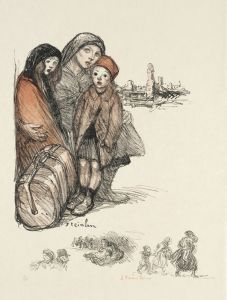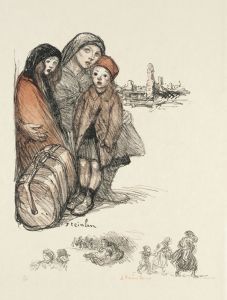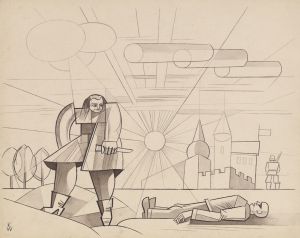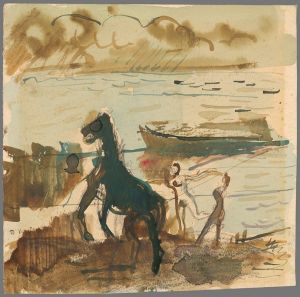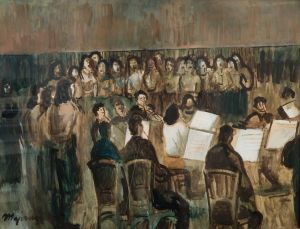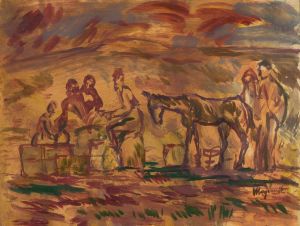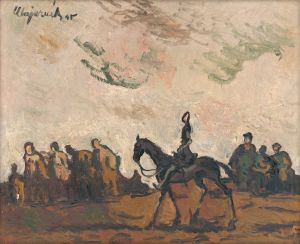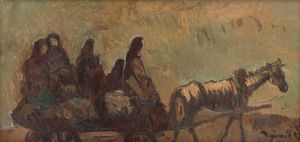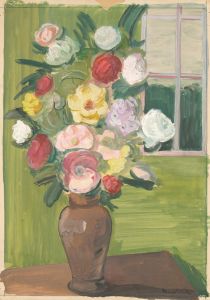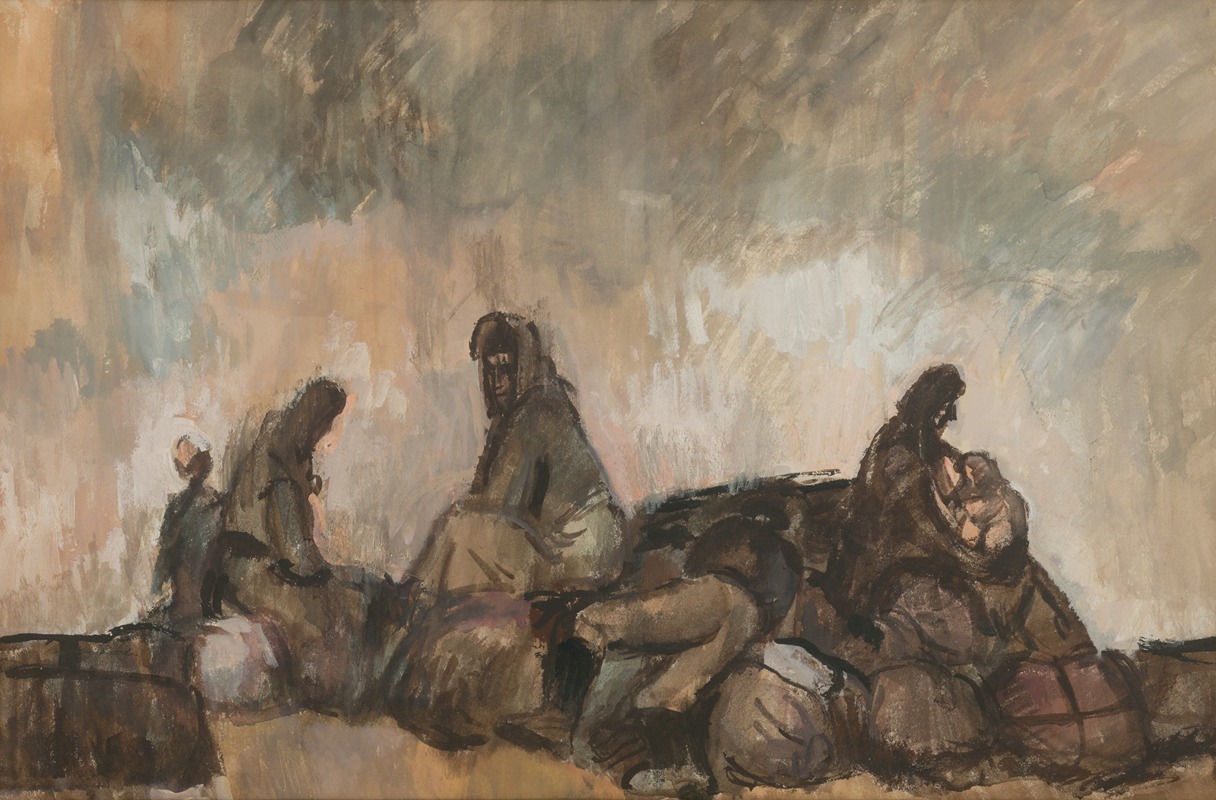
Refugees
A hand-painted replica of Cyprián Majerník’s masterpiece Refugees, meticulously crafted by professional artists to capture the true essence of the original. Each piece is created with museum-quality canvas and rare mineral pigments, carefully painted by experienced artists with delicate brushstrokes and rich, layered colors to perfectly recreate the texture of the original artwork. Unlike machine-printed reproductions, this hand-painted version brings the painting to life, infused with the artist’s emotions and skill in every stroke. Whether for personal collection or home decoration, it instantly elevates the artistic atmosphere of any space.
Cyprián Majerník's painting Refugees is a notable work by the Slovak modernist painter, created during the mid-20th century. Majerník (1909–1945) was an artist whose work often reflected the social and political turmoil of his time, particularly the impact of World War II and the human suffering it caused. His paintings frequently depicted themes of despair, displacement, and the struggles of marginalized individuals, which are evident in Refugees.
The painting portrays a group of displaced individuals, likely fleeing from conflict or persecution. Majerník's use of muted colors and expressive brushwork emphasizes the emotional weight of the scene, capturing the vulnerability and uncertainty faced by refugees. The figures in the painting are often described as elongated and stylized, a characteristic feature of Majerník's artistic style, which was influenced by Expressionism. This stylistic choice enhances the sense of anguish and alienation experienced by the subjects.
Majerník's work, including Refugees, is deeply rooted in the historical context of the 1930s and 1940s, a period marked by the rise of fascism, the outbreak of World War II, and the displacement of millions of people across Europe. As a Slovak artist living in Prague, Majerník was acutely aware of the political and social upheavals of his era. His art often served as a response to these events, reflecting his empathy for the suffering of others and his own struggles with illness and adversity.
While specific details about the creation and exhibition history of Refugees are limited, the painting is considered an important example of Majerník's ability to convey profound human emotions through his art. It is also representative of his broader body of work, which often addressed themes of exile, persecution, and the resilience of the human spirit.
Cyprián Majerník's contributions to modern art were cut short by his untimely death in 1945, but his works, including Refugees, continue to be studied and appreciated for their emotional depth and historical significance. The painting remains a poignant reminder of the hardships faced by refugees and the enduring relevance of art in documenting and responding to human suffering.





